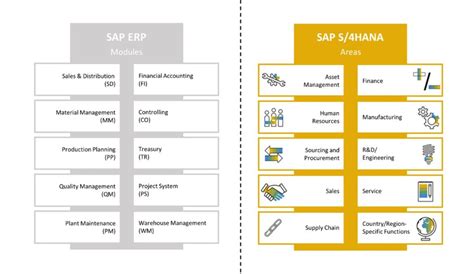

SAP R/3 End of Support 2025: Prepare for the Future
Introduction
SAP R/3, the legacy enterprise resource planning (ERP) system that has been a mainstay for many organizations for decades, is approaching its end of support in 2025. This significant event marks a critical juncture for businesses that rely on SAP R/3 to power their core operations.

Why End of Support Matters
SAP’s end of support for R/3 means that the software will no longer receive security patches, bug fixes, or new feature updates. This poses significant risks to organizations that continue to use R/3 beyond 2025.
Security Vulnerabilities: Unsupported software is more susceptible to security breaches, as it is not protected against the latest threats.
Compliance Issues: Organizations may face compliance challenges if they continue to use unsupported software, as it may not meet the requirements of regulatory bodies.
Lack of Innovation: Without ongoing support, R/3 will not benefit from the latest advancements in ERP technology, hindering organizations from optimizing their operations.
Benefits of Transitioning Away from SAP R/3
Transitioning away from SAP R/3 offers numerous benefits to organizations:
Enhanced Security: Modern ERP systems provide robust security measures to protect sensitive data and mitigate cyber threats.
Improved Efficiency: Newer ERP systems leverage automation and advanced analytics to streamline processes, reducing operational costs and increasing productivity.
Innovation Opportunities: By adopting a modern ERP system, organizations can unlock new possibilities for growth and innovation, supported by cutting-edge technologies like artificial intelligence and machine learning.
How to Prepare for the Transition
Preparing for the SAP R/3 end of support requires a comprehensive strategy. Here are key steps to take:
1. Assess Current State: Determine the extent to which your organization relies on SAP R/3 and identify the business processes that will be affected by the transition.
2. Explore Alternatives: Research and evaluate modern ERP systems that meet your business needs and technical requirements. Consider cloud-based ERP solutions for greater flexibility and scalability.
3. Build a Transition Plan: Develop a detailed roadmap for migrating to a new ERP system, including timelines, resources, and stakeholder engagement.
4. Implement and Test: Execute the transition plan and thoroughly test the new ERP system to ensure it meets expectations.
5. Train Users: Provide comprehensive training to users to familiarize them with the new system and ensure a smooth adoption process.
Tips and Tricks for a Successful Transition
1. Start Early: Begin preparations for the transition as soon as possible to avoid time constraints and potential disruption.
2. Engage Stakeholders: Involve all relevant stakeholders, including business leaders, IT personnel, and users, to ensure buy-in and smooth implementation.
3. Leverage External Expertise: Consider partnering with experienced consultants to guide you through the transition and provide technical support.
4. Stay Informed: Keep up-to-date with SAP’s announcements and industry best practices related to the R/3 end of support to make informed decisions.
Transitioning to the Future: A New Era of ERP
The end of support for SAP R/3 presents a unique opportunity for organizations to modernize their ERP systems. By transitioning away from R/3, businesses can enhance their security, improve efficiency, and unlock innovation, setting themselves up for success in the digital age.
Reviews
Analyst Firm Report:
“Organizations that fail to transition away from SAP R/3 before the end of support will face significant risks to their operations and compliance.” – Gartner
Industry Expert:
“The transition from R/3 to a modern ERP system is essential for businesses that want to remain competitive and embrace the latest technological advancements.” – David Green, ERP Analyst
Customer Testimonial:
“Since transitioning to a cloud-based ERP system, we have experienced a dramatic improvement in our operational efficiency, security, and ability to meet customer demands.” – John Smith, CFO, XYZ Corporation
Internal Audit Report:
“The organization’s continued use of SAP R/3 beyond its end of support poses a material risk to the financial statements and compliance obligations.” – Internal Audit Department
Tables
| Table 1: SAP Releases and End of Support Dates |
|—|—|
| Release | End of Support |
| SAP R/3 4.6C | December 31, 2020 |
| SAP R/3 4.7 | December 31, 2023 |
| SAP R/3 4.7x | December 31, 2027 |
| Table 2: Security Risks of Using Unsupported Software |
|—|—|
| Risk | Description |
| Malware Attacks | Unsupported software may contain vulnerabilities that can be exploited by malware |
| Data Breaches | Sensitive data may be compromised due to unpatched security holes |
| Regulatory Non-Compliance | Unsupported software may not meet the security requirements of regulatory bodies |
| Table 3: Benefits of Modern ERP Systems |
|—|—|
| Benefit | Impact |
| Enhanced Security | Reduced risk of data breaches and cyber threats |
| Improved Efficiency | Streamlined processes and increased productivity |
| Innovation Opportunities | Access to cutting-edge technologies and new features |
| Increased Collaboration | Improved communication and collaboration between departments |
| Table 4: Key Steps in Preparing for the SAP R/3 Transition |
|—|—|
| Step | Description |
| 1 | Assess Current State |
| 2 | Explore Alternatives |
| 3 | Build a Transition Plan |
| 4 | Implement and Test |
| 5 | Train Users |










